Stop Playing Hide and Go Seek!
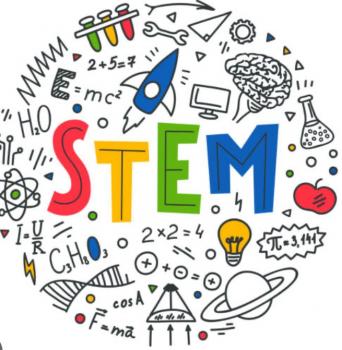
- School:
- Tomoka Elementary School
- Subject:
- Stem
- Teacher:
- Jessica Springer
- Students Impacted:
- 40
- Grade:
- 3
- Date:
- August 15, 2024
Investor
Thank you to the following investor for funding this grant.
Anonymous Family Foundation - $928.58
Original Grant Overview
Goal
Students will engage with the engineering organization space to conduct in-depth analysis, design, invention, construction, creation, experimentation, and exploration of intricate STEM, engineering, and passion projects, as well as project-based learning concepts. I am seeking organizational tools to assist my students in achieving their academic potential.
Category
Learning Aids - Sunshine state book sets, robotics kits, puzzle boards, science models, engineering supplies, etc.
What will be done with my students
Students will establish their own strategies for resource access and will design a physical space that aligns with their learning preferences. Over the course of the year, they will have the opportunity to utilize our engineering organization area, which will feature an array of project materials. This area will support more than 40 projects, allowing students to engage in activities such as analysis, design, invention, construction, creation, experimentation, and exploration of practical projects. The following are some of the STEM, engineering, passion projects, and project-based learning projects we will create this year: Overcoming Gravity depth of knowledge level 3, Cooking with the Sun’s Energy depth of knowledge level 3, Does the Mass of Gum Change as it is Chewed? depth of knowledge level 3, I Seek the Light - Plant Maze Design Challenge depth of knowledge level 3, Run a Taco Truck Project-Based Learning, Create Two Different Division Displays, Fall Math Scenes, Fluffy Puppy Hotel, Group Investigating Problem: the Titanic, “Record Breaking” Place Value Project, Building a Water Slide, Fraction Kitchen Chex Mix Recipe, Max Mass Movers, Rampin' It Up, Changing the State of Water 5E Lesson, What Does Your Garden Grow MEA, Create a Math Board Game, Fluffy Puppy Hotel, Black Mathematician History Project, Geometrocity: A City Made of Math, Candy Catapult, Gingerbread House Project, Floating Hearts, Leprechaun Trap Engineering Challenge, Potato Olympics, Random Acts of Kindness, Farm Help Wanted, How is Temperature Measured?, Pet Shelter Project, Pull Back Cars STEM, Secret Agent Laser Tag, How Light Moves, String Telephone, and Light Maze. These projects cover the following standards: G.K12.1.1.1d Nature of Knowledge - Accomplish: Construct own meaning within a chosen field and offer new contributions to this respective field of study. G.K12.1.1.2c Basic Research - Perform: Use multiple primary and secondary sources to analyze, synthesize, and evaluate relevant persons, places, events, or beliefs that are dominant in a field. G.K12.1.1.3b Manipulation of Data - Understand: Seek and identify connections between fields to make sense of patterns and trends. G.K12.1.1.4a Organization of Data - Know: Create or select an existing system for organizing data in a sequence. G.K12.1.2.1c Conceptual Frameworks - Perform: Create graphic organizers that organize the logical sequences of key conceptual themes in a field of study. G.K12.1.2.2b Components and Methodologies - Understand: Create a list of the methodological skills and processes (general and specific) used by practicing professionals in a field. G.K12.1.2.3b Conceptual Connections - Understand: Demonstrate foundational knowledge of various fields and disciplines. SC.3.N.1.1 Raise questions about the natural world, investigate them individually and in teams, through free exploration and systematic investigations, and generate appropriate explanations based on those explorations. SC.3.N.1.2 Compare the observations made by different groups using the same tools and seek reasons to explain the differences across groups. SC.3.N.1.3 Keep records as appropriate, such as pictorial, written, or simple charts and graphs, of investigations conducted. SC.3.N.1.4 Recognize the importance of communication among scientists. SC.3.N.1.5 Recognize that scientists question, discuss, and check each other’s evidence and explanations. SC.3.N.1.6 Infer based on observations. SC.3.N.1.7 Explain that empirical evidence is information, such as observations or measurements, that is used to help validate explanations of natural phenomena. SC.3.N.3.1 Recognize that words in science can have different or more specific meanings than their use in everyday language; for example, energy, cell, heat/cold, and evidence. SC.3.N.3.2 Recognize that scientists use models to help understand and explain how things work. SC.3.N.3.3 Recognize that all models are approximations of natural phenomena; as such, they do not perfectly account for all observations. SC.3.E.5.4 Explore the Law of Gravity by demonstrating that gravity is a force that can be overcome. The students demonstrate that gravity is a force that can be overcome. SC.3.E.5.2 depth of knowledge level Identify the Sun as a star that emits energy; some of it in the form of light. SC.3.E.6.1 Demonstrate that radiant energy from the Sun can heat objects and when the Sun is not present, heat may be lost. SC.3.P.8.2 Measure and compare the mass and volume of solids and liquids, SC.3.L.14.2 Investigate and describe how plants respond to stimuli (heat, light, gravity), such as the way plant stems grow toward light and their roots grow downward in response to gravity. SC.3.P.8.3 Compare materials and objects according to properties such as size, shape, color, texture, and hardness. SC.3.P.9.1 Describe the changes water undergoes when it changes state through heating and cooling by using familiar scientific terms such as melting, freezing, boiling, evaporation, and condensation. SC.3.L.14.1 Describe structures in plants and their roles in food production, support, water and nutrient transport, and reproduction. SC.3.L.14.2 Investigate and describe how plants respond to stimuli (heat, light, gravity), such as the way plant stems grow toward light, and their roots grow downward in response to gravity. SC.3.L.17.2 Recognize that plants use energy from the sun, air, and water to make their own food MA.K12.MTR.1.1 Actively participate in effortful learning both individually and collectively. MA.K12.MTR.2.1 Demonstrate understanding by representing problems in multiple ways. MA.K12.MTR.3.1 Complete tasks with mathematical fluency. MA.K12.MTR.4.1 Engage in discussions that reflect on the mathematical thinking of self and others. MA.K12.MTR.5.1 Use patterns and structure to help understand and connect mathematical concepts. MA.K12.MTR.6.1 Assess the reasonableness of solutions. MA.K12.MTR.7.1 Apply mathematics to real-world contexts. MA.3.NSO.2.1 - Add and subtract multi-digit whole numbers including using a standard algorithm with procedural fluency. MA.3.AR.1.2 Solve one-and two-step real-world problems involving any of four operations with whole numbers. MA.3.M.1.1 Select and use appropriate tools to measure the length of an object, the volume of liquid within a beaker and temperature. MA.3.M.1.2 Solve real-world problems involving any of the four operations with whole number lengths, masses, weights, temperatures or liquid volumes. MA.3.DP.1.1 Collect and represent numerical and categorical data with whole-number values using tables, scaled pictographs, scaled bar graphs or line plots. MA.3.GR.2.3 Solve mathematical and real-world problems involving the perimeter and area of rectangles with whole-number side lengths using a visual model and a formula. MA.3.AR.2.1 Restate a division problem as a missing factor problem using the relationship between multiplication and division. MA.3.AR.3.3 Identify, create and extend numerical patterns. MA.3.NSO.2.4 Multiply two whole numbers from 0 to 12 and divide using related facts with procedural reliability. MA.3.NSO.2.2 Explore multiplication of two whole numbers with products from 0 to 144, and related division facts. MA.3.NSO.1.3 Plot, order and compare whole numbers up to10,000, MA.3.NSO.1.4 Round whole numbers from 0 to 1,000 to the nearest 10 or 100, MA.3.FR.2.1 Plot, order and compare fractional numbers with the same numerator or the same denominator, MAFS.3.MD.2.3 Draw a scaled picture graph and a scaled bar graph to represent a data set with several categories. Solve one- and twostep “how many more” and “how many less” problems using information presented in scaled bar graphs MAFS.3.MD.1.2 Measure and estimate liquid volumes and masses of objects using standard units of grams (g), kilograms (kg), and liters (l). Add, subtract, multiply, or divide to solve one-step word problems involving masses or volumes that are given in the same units.
Benefits to my students
The implementation of this grant, in conjunction with the Futures Grant titled “Creating Engineering Magic,” will provide students with access to an extensive array of over 100 supplies dedicated to STEM, engineering, passion projects, and project-based learning, all housed within a single, organized space. The availability of materials is crucial for the success of these projects. It is essential to teach gifted learners organizational skills and to maintain an orderly classroom environment. Research indicates that students in well-structured classrooms exhibit increased on-task behavior and improved academic performance. Designated project organization areas actively involve gifted students in the decision-making process, fostering a sense of responsibility for their own educational journey. These spaces facilitate the development of research skills for information retrieval, higher-order thinking skills for analysis, as well as creative and problem-solving skills that promote adaptability. Furthermore, collaboration within these organization areas encourages students to build upon original concepts and refine their plans. Such environments enhance students' ability to concentrate on their projects while providing easy access to necessary materials.
Budget Narrative
I am requesting a Triple-Wide Mobile Classroom Storage Cart with 12 Small & 8 Large Bins so students can access different organized materials for projects. A 360°Rotating Desk Organizer will give students access to organized drawing, cutting, and stapling tools. I am requesting an 8 Tier Rolling File Cart with Sliding Trays so students can access draft papers, graphing sheets, posters, cardboard pieces, and different colored/sized construction paper. Also, a Plastic Desktop Storage Box with 9 Drawers to hold the tiny materials for projects. *These will be used in combination with the Futures Grant “Creating Engineering Magic”.
Items
| # | Item | Cost |
|---|---|---|
| 1 | Triple-Wide Mobile Classroom Storage Cart | $832.61 |
| 2 | 360°Rotating Desk Organizers | $27.99 |
| 3 | 8 Tier Rolling File Cart | $38.99 |
| 4 | 6 Pcs Mini Drawer Organizer | $28.99 |
| Total: | $928.58 |
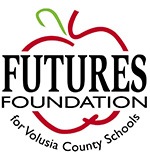
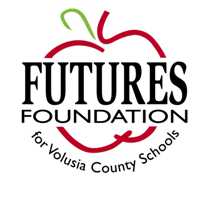



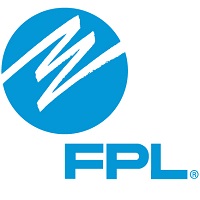




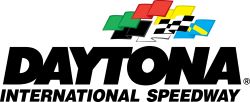
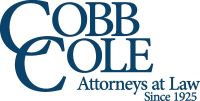


Share
Please share this page to help in fulfilling this grant.
Email to a Friend